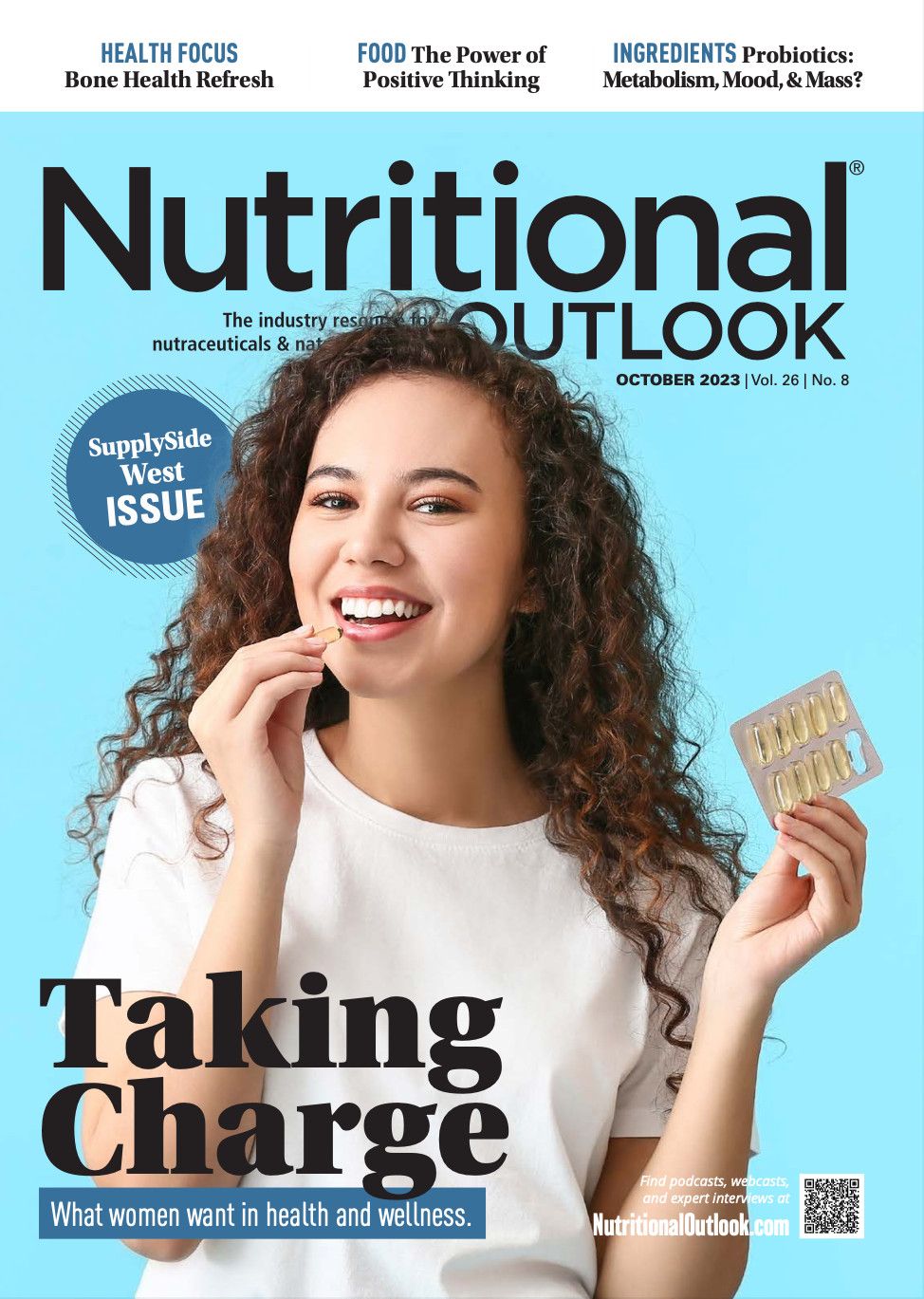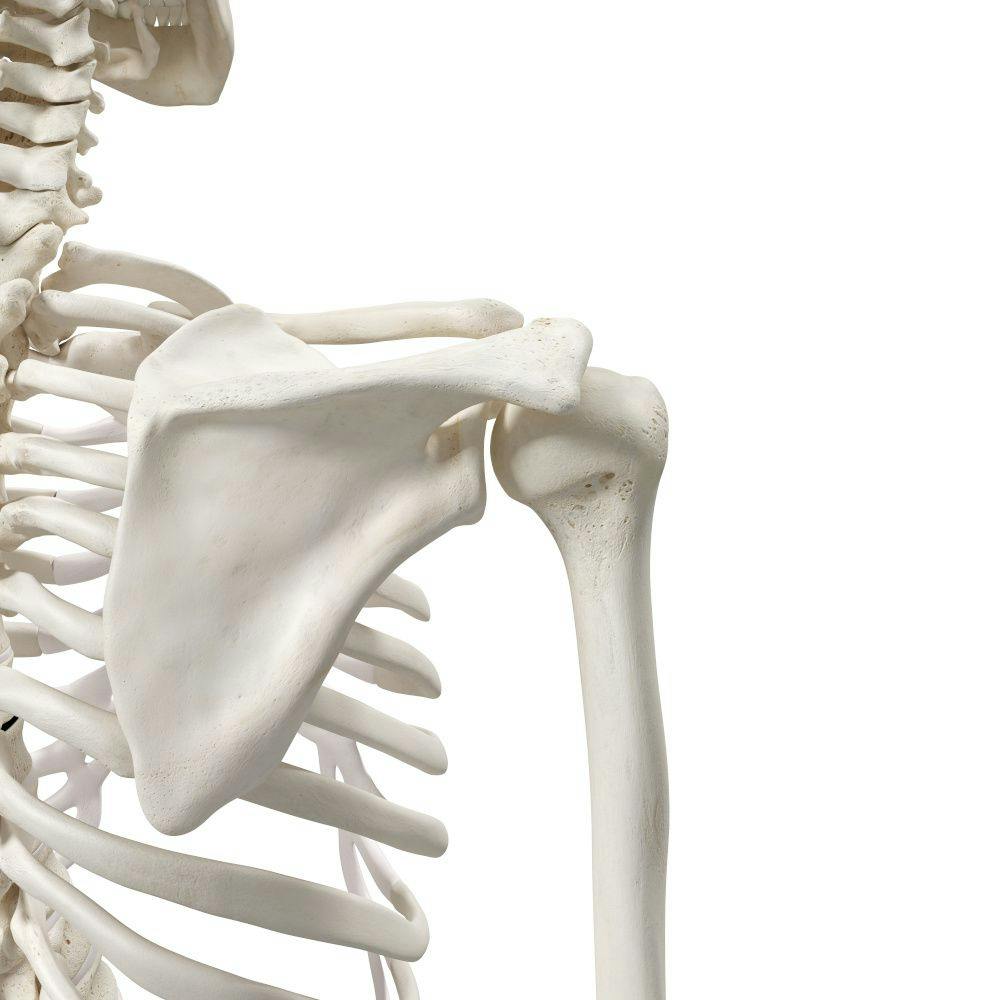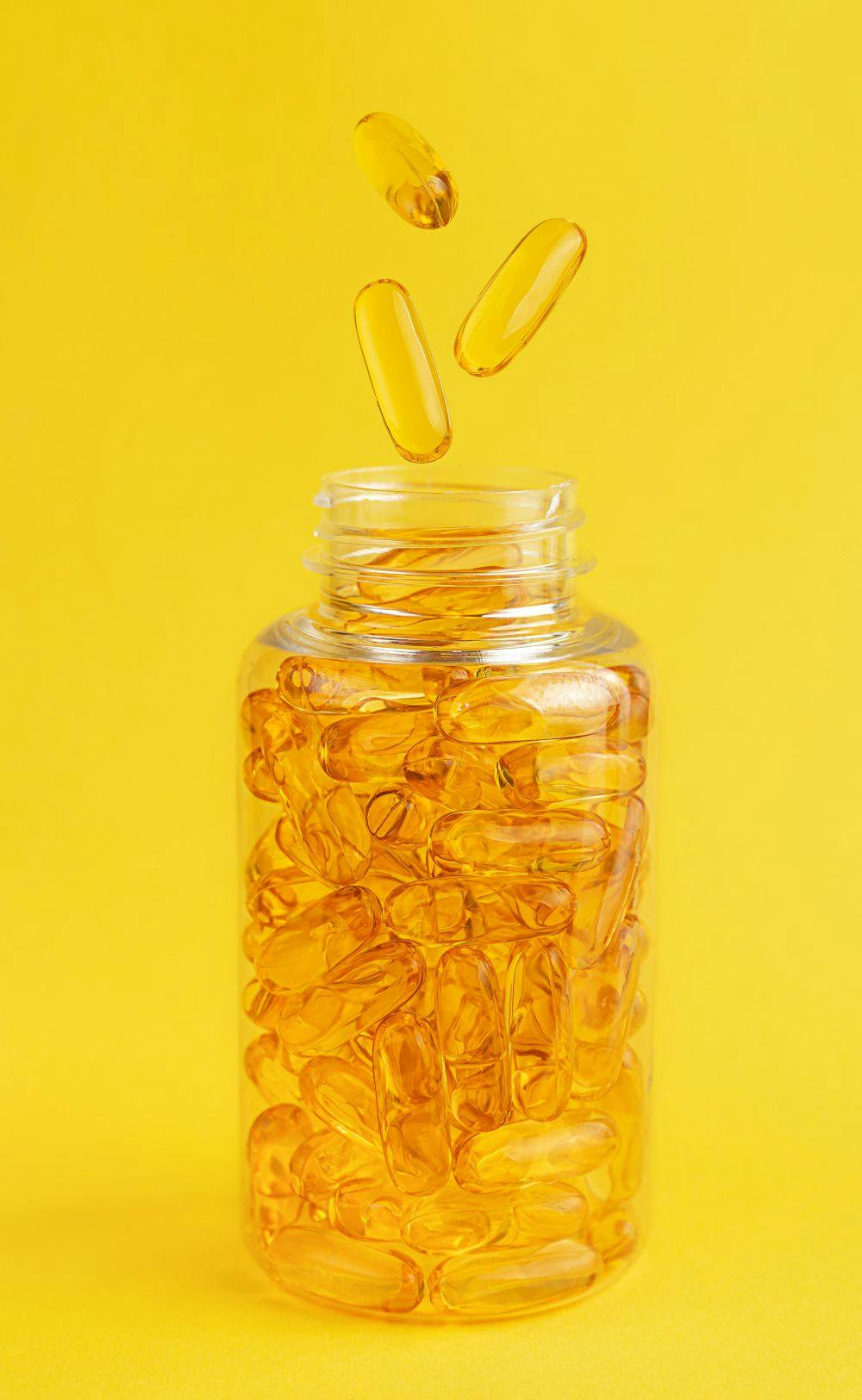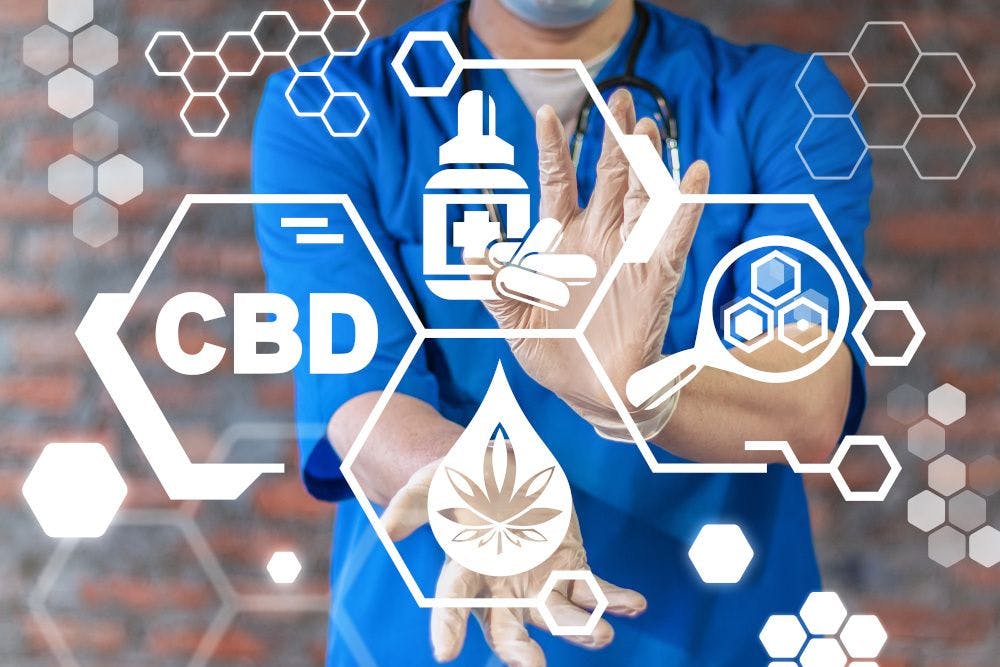Taking charge: What women want in health, wellness, and supplements
What does a 21st-century women’s-health supplement look like?
© Pixel-Shot - Stock.adobe.com

“What do women want?” It’s a timeless question that all but defies easy answer. Yet when it comes to women’s dietary supplement choices, we can at least be certain of this: They want a lot more than they used to.
So much more, in fact, that they’re set to drive the global market for women’s health and beauty supplements from a 2022 value of $54.5 billion to an impressive $89.3 billion by 2032, reflecting compound annual growth at a healthy 5.2% clip.1
But in case anyone was still wondering, just slapping a pink label onto a multi and pitching it as “For Her” won’t get women to click the “buy” button anymore—assuming it ever did.
So it’s a fortuitous turn of events that “there’s more emphasis now on recognizing that sex is a significant factor in many health conditions,” says Izaskun Monsalve, PhD, global marketing manager, women’s, infant, and heart health, ProActive Health, Kerry (Tralee, Ireland).
That being the case, Monsalve continues, “Embracing women’s wellness through a range of unique solutions is becoming a firm commercial proposition for small and big brands alike.”
Engines Of Empowerment
And not a moment too soon, if you ask Amanda Frick, ND, LAc, vice president of medical affairs, Thorne (New York City). “There’s been a societal shift toward empowering women on multiple fronts,” she says, “and health-and-wellness is no different.”
Of course, women have long been the sector’s biggest boosters, with 63.8% of the female population at large using supplements compared to only 50.8% of men.2
What’s more, women have traditionally been the gatekeepers of their families’ health, purchasing most of the supplements that enter the home. And as Frick says, “Even when those purchases were for partners, children, parents, or someone else, women have been the catalyst.”
But what Frick notices more lately is a redirecting of that catalytic focus inward. “The real power now is that we do more of that shopping for ourselves,” she says. “As more of us find our voices and speak up for what we need, we’re learning to advocate for our health and for what optimization means to us.”
More Is More
And “optimization” is the name of the game for contemporary women. In fact, Frick observes, “More women are looking to optimize their lifestyles overall, whether they involve a high-stress corporate grind; physical performance and recovery; nutritional support for vegan, keto, or plant-based diets; or activities for unwinding.”
The fact that women have so much to optimize for underscores that they’re “leading busier lives than ever,” Monsalve adds, “typically balancing full-time work with children, and often looking out for aging parents. So with so much on their plates, they’re increasingly finding they need to be proactive in looking after their own health.”
Fortunately, women’s engagement with health and wellness in general makes them “curious about unique solutions available in the marketplace,” Frick says. “We also typically see female consumers who are educated—with a college degree or higher—and who have a household income between $50,000 and $150,000 across the United States.”
Encouraging Improvement
No wonder, then, that they’re not just asking for more for themselves; they’re demanding it. As Frick observes, “Ever since I started my private practice, I’ve watched more women saying, ‘I want more,’ ‘I want better,’ and ‘Your traditional options aren’t working for me.’ Gone are the days of doing exactly what the doctor says—and thank goodness!”
The message to brands is equally clear: “Women are creating an environment that encourages better options that push the envelope for higher quality,” Frick declares.
In turn, brands are responding. “Major companies in women’s health are focused on developing innovative new products,” says Sébastien Bornet, vice president, global sales and marketing, Horphag Research (Hoboken, NJ), exclusive worldwide supplier of the ingredient Pycnogenol. “With a surge in demand and continuous product development, we expect this market to experience substantial growth.”
Redefining Wellness
But for that growth to occur, the newly developed products have to reflect genuine innovation—not just a rebranding of a standard supplement in a stereotypically feminine fashion.
All of which is forcing industry to revisit the concept of what, in fact, a 21st-century women’s-health supplement actually is.
“It’s an interesting question that challenges how we define this sector in the first place,” Monsalve opines. “And while for a long time it was primarily seen in terms of reproductive health, we now know that some conditions are unique to women, or at least are more common, serious, or different for them than for how they present in men.”
As such, she believes, “It’s helpful to see women’s health as encompassing females’ unique physiological and nutritional needs throughout the life course, from adolescence to post-menopause.”
It helps to connect with female consumers on a personal and intuitive level, too. “We want product messaging that’s clear and direct about benefits,” Frick says. “‘Hormone balance’ sounds great, but what does that mean? We want to know how a product will perform in our best interest and how it serves the goals we seek.”
Women also index highly vis-à-vis concerns around sourcing, environmental impact, and quality, Frick adds—“as we should!” And price, convenience, and ease of use always count. “A product won’t work well if you struggle to take it every day,” she argues. “An approachable user experience and price that encourage consistency are key to success for the end user and the manufacturer.”
And can we make this fun while we’re at it? “Products that help balance lifestyle choices like ‘wine-down Wednesdays,’ girls’ dinner nights, music festivals, or whatever else brings women joy” will gain traction, Frick believes, adding, “I love that we’re moving past a sort of ‘wellness perfectionism’ into a more balanced approach.”
Beyond the Clinic
Clinically speaking, Frick notices women turning to supplements as alternatives to “poor options in the ‘traditional-medicine’ world.” For example, “Women who suffer from polycystic ovary syndrome, endometriosis, frequent UTIs, and more are looking to the natural-wellness space for options that help them take matters into their own hands.”
Courtney A. Higginson, B.Sc., business manager, supplement ingredients, AIDP Inc. (City of Industry, CA), agrees, noting that “as women navigate the complexities of their unique physiological changes and challenges,” they’ve embraced supplementation “as a complementary approach to traditional healthcare.”
Healing Hormones
One condition around which this approach has particular momentum is polycystic ovary syndrome (PCOS), which is the most common hormone disorder among women worldwide3 and the cause of outcomes ranging from irregular menstrual cycles and sleep apnea to infertility and miscarriage.
And while PCOS is the leading cause of anovulatory infertility4, Monsalve notes, “it’s also associated with a wide range of endocrine and metabolic symptoms,” she says, “including hyperandrogenism, obesity, insulin resistance, and hyperinsulinemia—all of which can lead to metabolic abnormalities such as type 2 diabetes and cardiovascular disease.5”
That’s why she advocates viewing PCOS “not just as a fertility issue but as one affecting women’s overall health,” and adds that Kerry’s Caronositol Fertility supplement offers “scientifically backed support for women with PCOS” via a patented ratio of carob-fruit extract Caronositol—“rich in the D-chiro-inositol that provides support for symptoms associated with metabolic syndrome,” Monsalve says—and myo-inositol from corn phytin.
“Recent discoveries on the effectiveness of myo-inositols on hormone regulation show that it may support hormonal regulation in women from puberty onwards6,” Monsalve notes.
Time of Their Life
And “onwards” these days can comprise quite a long time. In fact, as lifespans extend ever longer, women today can expect to spend up to 40% of their lives in menopause7, with approximately one billion women anticipated to be in its throes worldwide by 2025, Monsalve adds.
And according to estimates, it’s likely that 80% of those women will experience at least some of menopause’s 48 identified symptoms, she continues, including hot flashes. So with research showing that phytoestrogens can ameliorate the intensity and frequency of hot flashes, Kerry developed its Luprenol product using a standardized extract of the hops-derived phytoestrogen 8-prenylnaringenin to “alleviate discomfort related to hormone imbalances and, particularly, declines in estrogen levels,” Monsalve says.
And while menopause has a reputation as a time of fading and senescence, menopausal women still care about their appearance, and Bornet points to a recent study showing that orally administered Pycnogenol French maritime pine bark significantly increased hair density, decreased transepidermal water loss in the scalp, and optimized scale microcirculation in menopausal subjects.8
Bornet notes that subjects in the supplement group saw their hair density increase from a baseline of 225.8 hairs per square centimeter to 293.6 hairs per square centimeter after two months of supplementation—“a statistically significant increase of 30%,” he says.
Adding to the supplement’s appeal are the findings a 2012 study in 20 healthy women aged 55 to 68 showing that Pycnogenol increased hyaluronic acid production in the skin by increasing activity of the hyaluronic acid synthase enzyme by 44%, reducing skin fatigue by 30%, and increasing skin elasticity by 25%.
Breaking Taboos
Monsalve views women’s willingness to “speak more openly about menopause, perimenopause, and their associated symptoms” as “something of a revolution” that’s cleared space for discussing heretofore taboo topics.
“And one interesting topic that’s come to the fore,” she says, “is sexual health.” To address women’s concerns around it, Kerry’s Damilib brand of damiana (Turnera diffusa) extract delivers “one of the highest concentrations of acacetin on the market, at 0.05%.” That’s important because acacetin inhibits the enzyme aromatase, which helps convert androgens like testosterone into estrogen.
As Monsalve explains, “With age, aromatase levels rise and testosterone levels fall, resulting in a reduction of free testosterone in the body. In studies, damiana extract has been shown to significantly suppress aromatase activity and produce an increase in free testosterone—and testosterone improves sexual activity, libido, and pleasure.”
Higginson notes that another standardized damiana extract—sold under the Liboost brand name, from Pharmactive (Madrid, Spain)—appears to inhibit the action of an enzyme that degrades cyclic guanosine monophosphate, or cGMP. Because cGMP mediates smooth-muscle relaxation, Liboost’s ability to support cGMP levels allows the compound to induce the vaginal smooth-muscle relaxation that “results in improved sexual response,” Higginson says.
Working with Women
Frick thinks that the appearance of such products on women’s-health shelves is all to the good, adding that “I anticipate more women will advocate for aspects of wellness that may have been considered fringe but that have always belonged in the wellness space. Products that support libido, lubrication, and optimizing sexual pleasure will continue to make their way into daily conversation.”
But for such products to emerge in the first place, brands need to dive deeper into the science behind women’s health and supplementation, and the research here has thus far been slim.
“It’s crucial that as a sector we advance our understanding of the female body, because this currently lags behind our knowledge of men’s health,” Monsalve says. “Women have been under-researched for years for several reasons, including a desire to minimize study variables such as hormonal cycles. But this has been changing, and we’re finding out far more about women’s health and nutritional requirements as a result.”
Consider what we’re learning in the realm of sports performance. “Many sports-nutrition studies haven’t been specific to women,” notes Krysta Rigby, marketing associate, Gencor (Austin, TX), adding that one audit of studies on six performance-based supplements calculated the number involving exclusively female subjects as only one-eighth the number involving exclusively male subjects.9
“Gencor recognized this shortcoming in female nutrition and put special focus on the different needs that women have in comparison to men,” Rigby says. The company even designed its Libifem fenugreek extract based on “gold-standard clinical research focusing entirely on a female population study.” One recent study on the product demonstrated its benefits for physically active women “looking to improve lean muscle mass and lower-body strength,” Rigby adds.
In addition to bringing female subjects into studies, “We also need to bring female staff into the R&D discussion,” Frick suggests. “I love the concept of products designed by and for women, and it’s important to have a variety of voices in the mix—women of different ages at different stages and with different lifestyles, work lives, and performance needs either on the field or in the boardroom. All have individualized needs that should be addressed and formulated for.” Pink packaging or not, those are the products that will win with today’s women.
References
- Market.Us. Global women’s health and beauty supplements market by product (vitamins, minerals, proteins & amino acids, enzymes, omega-3, botanicals, probiotics, and other products), by application (beauty, women’s health), by distribution channel, by region and companies—industry segment outlook, market assessment, competition scenario, trends, and forecast 2023–2032. May 2023. https://market.us/report/womens-health-and-beauty-supplements-market/
- Flynn, J. 25 Fascinating supplements industry statistics (2023); data + trends. Zippia. June 27, 2023. https://www.zippia.com/advice/supplements-industry-statistics/
- Polycystic ovary syndrome: What more can be done for patients? Lancet Reg Health Eur. Published online October 3, 2022. DOI: 10.1016/j.lanepe.2022.100524
- World Health Organization. Polycystic ovary syndrome. June 28, 2023. https://www.who.int/news-room/fact-sheets/detail/polycystic-ovary-syndrome
- Sanchez-Garrido, M.A.; Tena-Sempere, M. Metabolic dysfunction in polycystic ovary syndrome: pathogenic role of androgen excess and potential therapeutic strategies. Mol Metab. Published online February 5, 2020. DOI: 10.1016/j.molmet.2020.01.001
- Kalra, S.; Kalra, B. Inositols in midlife. J Midlife Health. 2018, 9 (1), 36-38. DOI: 10.4103/jmh.JMH_52_16
- Minkin, M.J. Menopause: hormones, lifestyle, and optimizing aging. Obstet Gynecol Clin North Am. 2019, 46 (3), 501-514. DOI: 10.1016/j.ogc.2019.04.008
- Cai, C.; Zeng, B.; Lin, L. An oral French maritime pine bark extract improves hair density in menopausal women: a randomized, placebo-controlled, double blind intervention study. Health Sci Rep. 2023, 6 (1), e1045. DOI: 10.1002/hsr2.1045
- Smith, E.S.; McKay, A.K.A.; Kuikman, M. Auditing the representation of female versus male athletes in sports science and sports medicine research: evidence-based performance supplements. Nutrients. 2022, 14 (5), 953. DOI: 10.3390/nu14050953

Prinova acquires Aplinova to further increase its footprint in Latin America
April 7th 2025Prinova has recently announced the acquisition of Brazilian ingredients distributor Aplinova, which is a provider of specialty ingredients for a range of market segments that include food, beverage, supplements, and personal care.





















